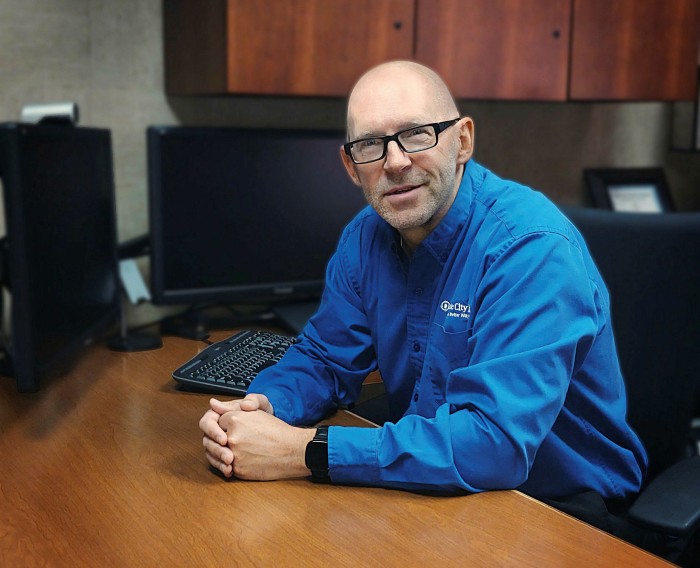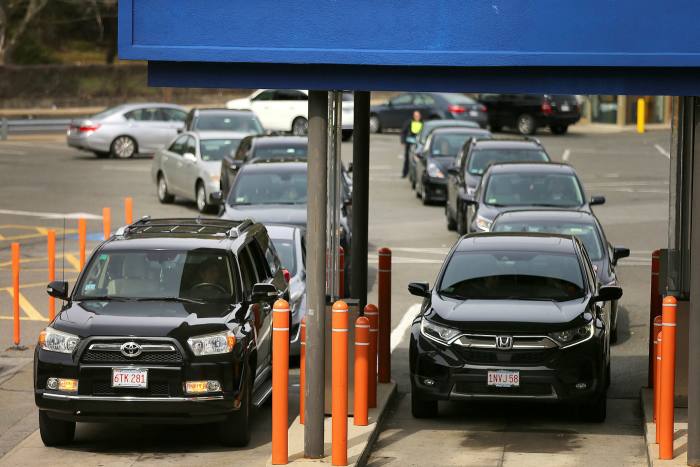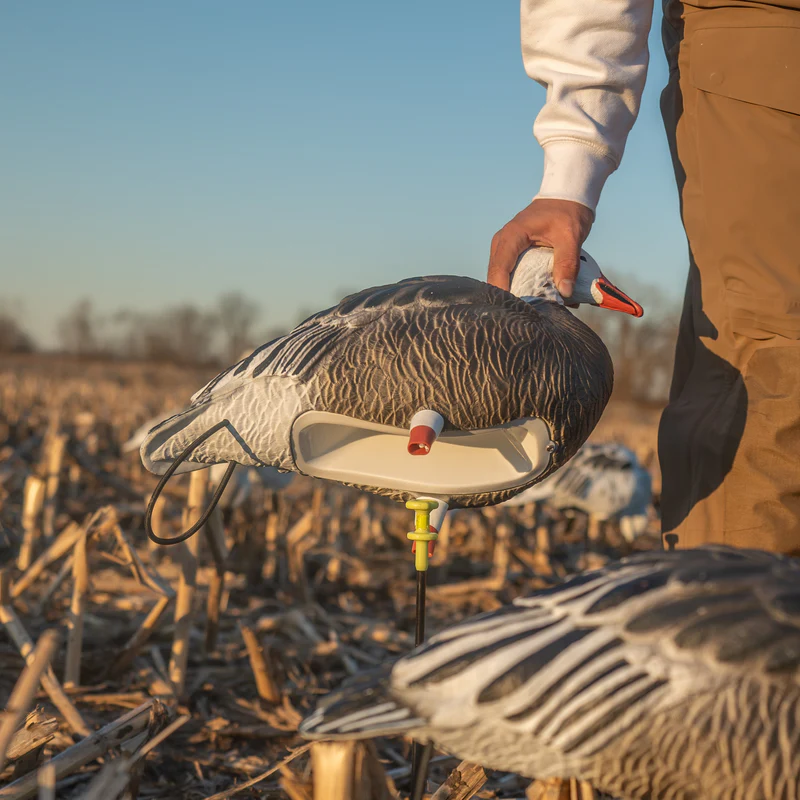Darryl Jorgenson steps into his cherry-red Ford pick-up truck and apologises for the glitter in the back seat. It is left over from his son’s prom night. Jorgenson, the business banker at Gate City Bank in Grand Forks, a small city of 50,000 people in North Dakota, is on his way to Rumors, a hockey bar at the Grand Cities Mall. It is one of the many small businesses he helped keep alive with a pandemic loan last year.
There are still a lot of local bankers like Jorgenson. They underpin large swaths of US economic activity, in particular small businesses and farmers, in many parts of the US.
Community banks tend to have less than $10bn in assets, take deposits and hold a traditional portfolio of mortgages and business loans. Of the 5,000 lenders in the federal programme that insures deposits against bank runs, all but 500 are community banks. They are ubiquitous in rural areas and, during the first months of the coronavirus pandemic, proved their value. Small businesses and the self-employed needed loans to stay afloat, and it was often the community banks that made them.
In late March 2020 Congress authorised the first round of the Paycheck Protection Program, $350bn in loans to keep workers on small business payrolls during shutdowns. The loans were refundable under certain conditions, and guaranteed by the federal government. But the applications had to go through a bank. Although community banks hold just 15 per cent of the total loans in the banking system, in the first round they processed 60 per cent of the programme’s funding. Even after larger banks had begun to participate in the second round, which closed at the end of last summer, community banks still accounted for 45 per cent of funding.
The pay cheque programme was a stress test for the country’s old-school financial relationships and banking network. Americans with a community bank nearby were more likely to be able to find assistance than if they had to rely on a top tier bank such as Wells Fargo. Federal Reserve governor Michelle Bowman says small, local banks were “irreplaceable” during the pandemic.

Now with the Fed and other regulators recognising the vital role community banks played in supporting small businesses when it mattered most, a new urgency has developed to fix their old problems. Smaller lenders need to adapt as banking moves online, and they still need to compete against national and regional banks with bigger marketing budgets and more capital.
Bowman has worked as a community banker herself; her family started a bank in Kansas in 1882. She says the size and flexibility of these banks can be a virtue. “There was a time when I helped a customer close a loan near a football field. That’s just something you do. It’s a lifestyle,” she says about local bankers’ relationships with clients.
A year after the first two rounds of the pay cheque loans closed last August, there is evidence that lenders such as Tioga State Bank in Spencer, New York and Community Spirit Bank in Red Bay, Alabama brought more small businesses into the banking system, and were able to expand their non-crisis business lending. But community banks are still closing branches faster than larger counterparts, particularly in cities, and their rural customer base is ageing. They have higher back-office costs, and a declining share of the banking industry’s assets and deposits.

Small-town bankers are so embedded in American myth that in the country’s favourite Christmas movie, It’s a Wonderful Life, the banker is the hero. But not everyone has access to a local bank. They flourish in more sparsely populated rural states, where it is less profitable for national banks to open a branch and attract customers. In North Dakota, community banks are also supported by the country’s only state-run bank; the 102-year-old Bank of North Dakota.
At Rumors in Grand Forks, Jorgenson speaks to Bill Tyrrell, one of the bar’s owners. Tyrrell has been a customer at Gate City since high school. He heard about the pay cheque programme on the news last April; the next day, as bigger banks were deciding whether to participate in the scheme, he received an email from Jorgenson, explaining how to apply.
By April 8 — five days into the programme — the loan had been approved and Tyrrell took his rent cheque through the mall to the Hope Church, his landlord. Now, every time there’s a change in the programme, he gets another email from Jorgenson. That level of communication is “just another reason I’d never switch banks,” he says. “Because why would I?”

Local knowledge
State and federal laws discouraged or prevented commercial banks from opening multiple branches or moving across state lines. Those laws began to be lifted from the 1980s, leading to waves of mergers. In 1990 there were 13,568 community banks, according to the Federal Deposit Insurance Corporation. By the first quarter of 2020, there were only 4,624. But the industry remains far less concentrated in America than in the rest of the developed world. The sector is also significantly less balanced than it used to be. In the early 1980s, community banks held 38 per cent of US banking assets. For the past several years, that has hovered around 12 per cent.
Gate City Bank, with $3.8bn in assets, is not just a smaller version of JPMorgan Chase. Community banks are better at using “soft” underwriting information that comes from local knowledge, say analysts. They hold more assets with longer maturities, such as mortgages and business loans.
They hold almost a third of the country’s commercial real estate loans. The longer maturities offer higher average yields on earning assets — in early 2021 a full percentage point above larger banks. Community banks have higher capital ratios and take on lower-risk business, with consistently lower write-off rates for failed loans.
“Community banks were uniquely well suited to handle the [pay cheque programme] demand, acquiring new relationships and serving existing ones,” says Kevin Parks, a portfolio manager at Atlanta-based Angel Oak Capital Advisors. The average loan size in the programme, just over $100,000, was exactly the size with which smaller banks have an underwriting advantage, he adds.
Smaller banks still tend to have lower overall returns, because they don’t trade assets or tend to offer wealth management services. FDIC data also show that community banks require more staff. They hold $7m in assets for every employee. Larger banks hold $12m, a gap that has been growing since the financial crisis.
As people have moved their personal banking online over the past decade, smaller banks have struggled to invest in new digital products. In 2019, one in three families used mobile banking as a primary way to get to their accounts, up from one in 10 in 2015, according to the FDIC.
However, as the pandemic has proved, people sometimes still really need to talk to a banker. With community bankers having a stake in the economic health of their local area, Bowman says they are more likely to understand the needs of their own borrowers. “They’re friends and neighbours with all of their customers,” she says.
Community goodwill
The day after the pay cheque programme started, Jorgenson came into his office to 73 voicemails asking about the loans, and emails arriving at between 100 and 150 per hour. “It was customers, neighbours,” he says, “people who weren’t even a customer of mine, who knew I was a banker.” He deputised a colleague as a small business banker, and together they began returning calls.
Only a month into the programme, economists at the Federal Reserve Bank of New York noticed that states with a higher share of business deposits at community banks were more likely to have had more pay cheque loan applications approved. One of the economists on that study says early demand for the loans was significantly higher than supply, which meant that a relationship with a bank and access to an office made a bigger difference. North Dakota had one of the highest shares of community bank business deposits and the highest density of approved pay cheque loans in the country. No other bank in the state processed more loans than Gate City.
At its headquarters in Fargo, the bank made three decisions. It would process all applications by order of arrival, not account size. It would take all applications from any kind of existing customer — not just business customers, but anyone with deposits or a mortgage. Calls had been coming in to the bank from as far away as California, so Gate City also decided it would only take applications from North Dakota, so long as the applicant showed a driver’s licence and went through the normal process to open an account.
The bank used its 33 drive-through teller stations for in-person meetings, and reopened lobbies when they were permitted to do so last June. In Grand Forks, Jorgenson collected proof of payroll at restaurant take-out windows, met hairdressers outside their homes and drove documents to car repair shop owners who did not have email.
Anton Schutz, a portfolio manager at Mendon Capital in Rochester, New York, who focuses on investments in community banks, says smaller banks were able to respond quickly because there were fewer people to make decisions. And their physical assets turned out to be useful. “We thought the [drive-through kiosks] were antiquated but boy, were those of value,” he says. “Even if you had your lobby closed, banks that had drive-throughs rocked. Most of them were community banks.”
In prosecuting fraud from the programme, the Department of Justice has focused on larger loans above the size community banks tended to make. But studies by the Bank Policy Institute and the McComb School of Business at the University of Texas suggest that fraudulent pay cheque loans were more likely to come through online lenders.

The hustle created goodwill. A seamstress in Fargo says her entire block of businesses received Gate City loans. A retail manager in the city gestures angrily towards the Wells Fargo building by the river and says it took them a year to reopen their doors. Wells Fargo did not respond to a request for comment. According to data released by the Small Business Administration, which looks after the programme, during the first two rounds Wells Fargo wrote 198 pay cheque loans under $150,000 in North Dakota, for a total of $4.4m. Gate City wrote 1,076 such loans, for a total of $22.5m. Both banks take retail deposits in the state, and have almost the same number of branches.
Lei Li from the Federal Reserve’s Board of Governors and Philip Strahan from Boston College argued in a December paper that financial relationships were undervalued as a way to carry out policy. “If you’re a firm that’s not connected to the banking system, you’re at a disadvantage,” says Strahan.
Community banks were also better at bringing in new customers. At larger banks, according to the Federal Reserve, 95 per cent of applicants for the pay cheque loans already had an account. For community banks, that was only 83 per cent. And satisfaction with community banks after receiving a pandemic loan was sharply higher than for big banks or online lenders.
In April Jose Lopez and Mark Spiegel of the San Francisco Fed found that the small and medium-sized banks that wrote pay cheque loans were more likely to make new small business loans after the first waves of the pandemic passed.
In Grand Forks, Jorgenson says hairdressers who took loans now come into the Gate City branch to drop off cash, then stop by his office to talk about the outlook for their businesses. “I have seen that across the board in community banks,” says Schutz. “They have taken a huge amount of relationships from the big banks.”

Support network
Their success at writing pay cheque loans during the pandemic, however, does not solve local banks’ problems. Policymakers are assessing what can be done to ensure their survival and to help more of them open for business.
Moreover, the benefits that smaller banks offered have not been evenly distributed. One study by economists at the New York University Stern School of Business found that community banks were much less likely than larger counterparts or online lenders to provide pay cheque loans to black or Hispanic-owned businesses. The study placed the blame on geography, not discrimination.

It is not clear how to give the rest of the country what North Dakota has. In June last year, according to a report by the Kansas City Fed, 79 per cent of the state’s consumer and business deposits were held at community banks. Only Kansas and Iowa come anywhere close. In California, community banks have 9 per cent of deposits. In New York, 5 per cent. Mark Jensen, an adjunct professor of banking at North Dakota State University in Fargo, says big national banks have not had a lot of luck in his state.
This is partly cultural, but he says they would also have to compete with North Dakota State Bank, which takes on some of the functions of a central bank. It holds deposits for the state government, and offers a clearing house for payments among the state’s commercial banks. And it currently holds stakes worth $22bn in local commercial investments, often alongside the state’s community banks. A local bank can have $2bn in assets, says Jensen, but take on a $30m commercial loan, with the Bank of North Dakota’s help.
Community banks are healthy in the state, he explains, because when it counts, they can lend like big banks. It is unlikely that model can be replicated in other states that do not have a state bank.
Bowman, the Fed governor, is looking at ways to help smaller banks innovate, and examining why so few new community banks have started up since the global financial crisis. The Fed is also working to provide specific guidance for smaller banks to meet reporting requirements with simple tools, and helping vet financial technology providers to make it easier to form partnerships and launch new services.
The pandemic shows that US community banks might need more than a kind word from officials to prosper. The pay cheque scheme functioned as a marketing campaign, a risk-sharing programme from the federal government that allowed them to attract more local customers. And Jorgenson’s experience in North Dakota shows that one good way for policymakers to make sure community banks are around when they are needed for small loans is to share some of the risk on the bigger loans.
“A lot of small businesses were happy with the little banks that came to the rescue,” says Schutz. “You saw community banks get all sorts of customers they hadn’t had. Now they want to keep them.”


























